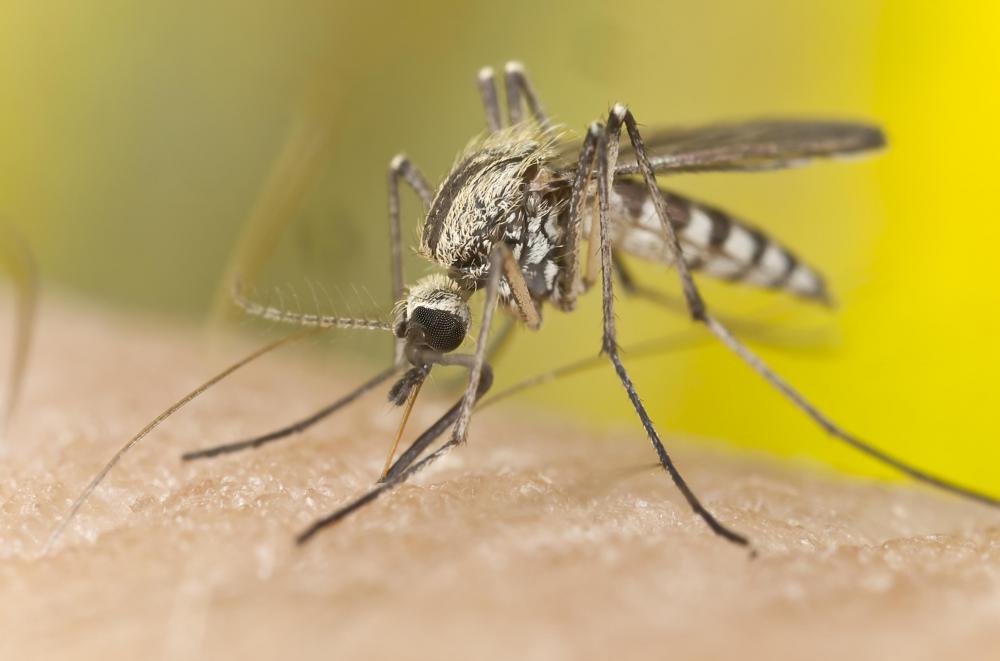At AllThingsNature, we're committed to delivering accurate, trustworthy information. Our expert-authored content is rigorously fact-checked and sourced from credible authorities. Discover how we uphold the highest standards in providing you with reliable knowledge.
What Is a Dragonfly Life Cycle?
The dragonfly belongs to the Odonata order of insects. Its life cycle consists of both an aquatic and terrestrial phase. During the dragonfly life cycle, the insect goes through the egg, nymph or larval stage, and then the adult stage. The dragonfly has evolved with some adaptations to help it survive in the two different environments as it goes through its process of maturing from an egg to an adult.
The dragonfly life cycle begins when a female lays her eggs in or near water. If the eggs are laid near a water source, they will remain dormant until the rains come and cause the water level to rise. The eggs will hatch when the temperature is right, and the larvae or nymph will emerge from the eggs in about a month.

This first stage of the dragonfly life cycle is spent in the aquatic environment. Dragonfly larvae feed on tiny aquatic organisms, which they either actively hunt or passively wait for. They have adapted a specialized lip that can extend up to a third of their body length. The larvae feed voraciously on the small aquatic organisms to enable them grow quickly.
As the dragonfly larvae grow, they progress to feeding on larger insects like mosquito larvae, small fish and tadpoles. During this part of the dragonfly life cycle, the larvae continually molt by shedding their outer skin as they increase in size. Most dragonfly larvae molt between 10 to 15 times before they attain maturity.
Dragonfly larvae have gills that serve two basic purposes. The gills enable them to breathe inside water and also serve as a propellant inside the aquatic environment when water is forced through them. Species of dragonfly vary, and the length of time it takes for the larvae to mature during the dragonfly life cycle depends on the type of species. Some dragonfly species mature in a few weeks while others actually take up to five years to mature.
When dragonfly larvae are finally ready to transform into adults, they often emerge from the water in the evening time and climb up to the leaves of partially submerged vegetation. Otherwise, they will simply float to the surface of the water and start swallowing air. The swallowing of air causes their skin to split so that the mature dragonfly can emerge from the discarded skin. The emergence of the adults from the skin is the last stage in the dragonfly life cycle.
Frequently Asked Questions
What are the stages of a dragonfly's life cycle?
A dragonfly's life cycle consists of three main stages: egg, nymph (also known as larva), and adult. After mating, a female dragonfly lays eggs in or near water. Once hatched, the nymph stage begins, which can last anywhere from a few months to several years, depending on the species. The nymph eventually emerges from the water and transforms into an adult dragonfly.
How long does a dragonfly live?
The lifespan of a dragonfly varies by species, but on average, an adult dragonfly lives for about 6 months. However, if you include the time spent as a nymph, some species can live up to several years in total. The nymph stage is typically the longest part of the dragonfly's life cycle.
Do dragonflies stay near water their whole life?
Dragonflies are closely associated with water, especially during their nymph stage, which is entirely aquatic. As adults, dragonflies often stay near water sources, such as ponds, lakes, and wetlands, because these habitats are rich in food sources and are also necessary for reproduction. However, adult dragonflies can also be found in meadows and gardens, hunting for insects.
What do dragonfly nymphs eat?
Dragonfly nymphs are voracious predators, feeding on a variety of aquatic organisms. Their diet includes small fish, tadpoles, mosquito larvae, and other invertebrates. Nymphs have a unique lower lip, called a labium, which they use to catch prey with a quick, extendable action.
How do dragonflies breathe underwater during their nymph stage?
Dragonfly nymphs breathe underwater through gills located inside their rectum. They draw water in and out of their rectum to extract oxygen. This unique respiratory system also allows them to propel themselves forward by rapidly expelling water, providing both respiration and locomotion.
What role do dragonflies play in the ecosystem?
Dragonflies are important predators that help control populations of harmful insects, such as mosquitoes. As both nymphs and adults, they consume large quantities of these pests. Additionally, dragonflies serve as indicators of environmental health, particularly the quality of freshwater habitats. Their presence suggests a well-balanced, biodiverse ecosystem.
AS FEATURED ON:
AS FEATURED ON:











Discussion Comments
What I find most interesting about a dragonfly's life cycle is how the insect knows how to fly as soon as it comes out of the water. Even birds have to learn how to fly, so that's very cool.
@ZipLine-- Dragonflies spend a great part of their time as nymphs. Although they also go through metamorphosis, they are not like butterflies because butterflies have larva. In this stage, butterflies do not resemble butterflies but a dragonfly nymph does very much resemble its adult form. That's why it is able to crawl up to land when it's time for the final transformation into an adult.
So the process of metamorphosis is a little different in dragonflies but there are quite a few other insects that go through the same process. Grasshoppers and cockroaches are other examples, the only difference being that they are not aquatic insects.
Wow. I had no idea that a dragonfly's life cycle includes so many different phases. It's quite amazing how they live in water first and then fly as adults. It's sort of like butterfly except that butterfly walk first as caterpillars and then transform into butterflies.
Post your comments